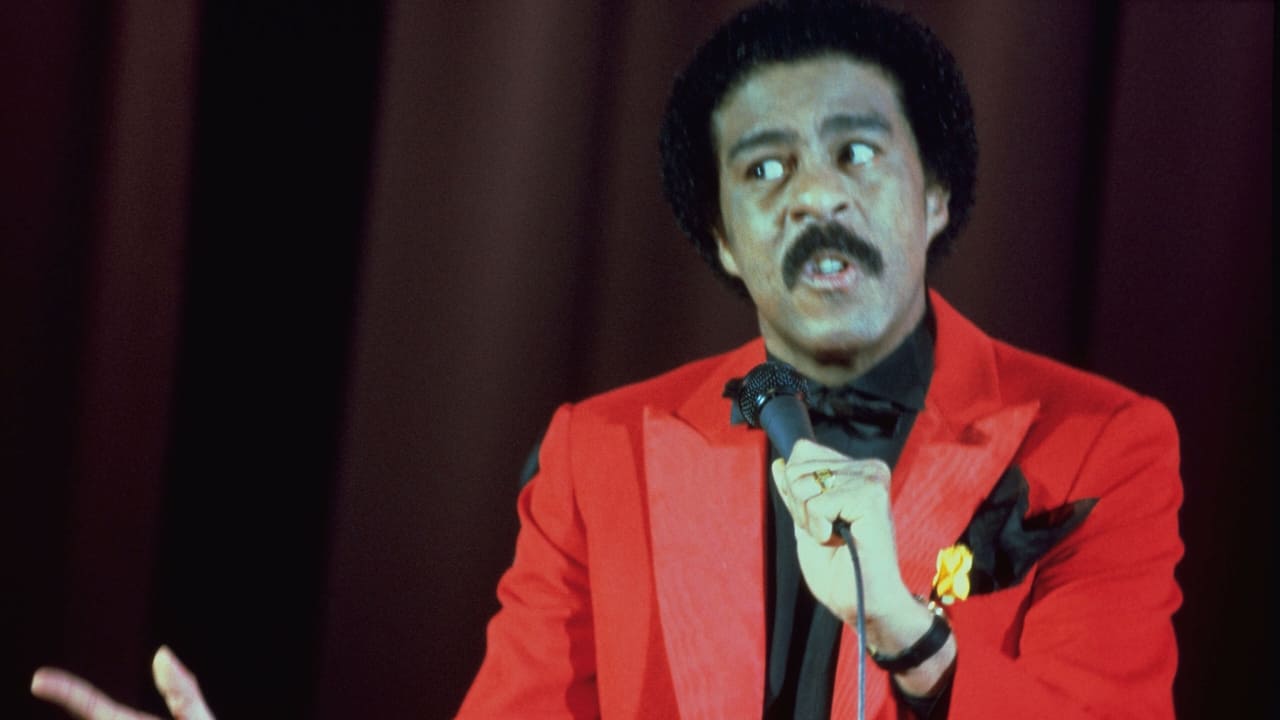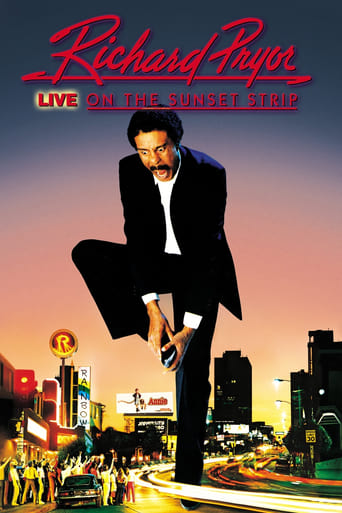

In his second most successful concert movie, again we brace ourselves for what magical dynamic stuff that will spout out of the mouth of an undying and legendary comic, who was pure genius. He cuts the surface of truth with his jokes, which makes so funny. The height of laughs for me, was when he was talking about the mafia. We've guaranteed ongoing laughs here, with new original material, where if your anti swearing, again take a rain check. Again 78 minutes passes by easy in another engrossing night of comedy, where our priceless Pryor tells those lengthy stories where that and vulgarity blend so well, where truths are told in funny and inventive scenarios, wonderfully written, where laughter just has us. No there never has been, or never will be, someone so sharp and cutting, or brilliant, like our Richard. Another concert movie success, in the city of Angels.
... View MoreRichard Pryor performs his stand-up comedy act on the Sunset Strip. This shows us the benefit of editing two performances together -- we get the best of two shows, making it better than seeing either one of them live.Pryor has a vulgar routine on sex, and how showbiz has the perk of more women, including one night with an unnamed Playboy Bunny. We hear how Africa has black people that are actually black (suggesting that American black people are not completely black).We get a great story on how he worked in a Mafia night club in Youngstown, Ohio with stripper Satin Doll, and how "crime don't pay". (Unfortunately, he again does not name names.)Most striking of all, though, is his frank discussion of cocaine use. Not regretful, he tells it like it is (or was).
... View MoreRichard Pryor Live on the Sunset Strip (1982) *** (out of 4)Here's a good stand up performance from Richard Pryor, although this certainly isn't his best work. I believe this was his first tour since catching himself on fire and it's rather obvious that Pryor's a bit nervous on stage and doesn't have that wonderful flow that shines through most of his work. The best moments include the talk about his trip to Africa and the various animals in the jungle. The final twenty minutes have Pryor talking about his accident, which has some laughs but they're rather uncomfortable laughs, although his final "message" comes across very nicely and touching.
... View MoreWhoa! After seeing Richard Pryor Live some years ago, I was eagerly looking forward to this when it appeared on satellite TV a while back. Boy was I disappointed. As soon as I saw that the whole thing had been filmed in soft-focus, and that it had quite obviously been edited with canned laughter like an episode of Happy Days, my shoulders slumped. I barely managed a smile during the whole sad affair, and thought to myself, 'What happened to the genius that I enjoyed in the other concert?'. I can also honestly say that I cannot remember any of the tedious observations that Mr Pryor offered up. This was probably made during his substance abusing days.Live?...It looked dead to me!
... View More